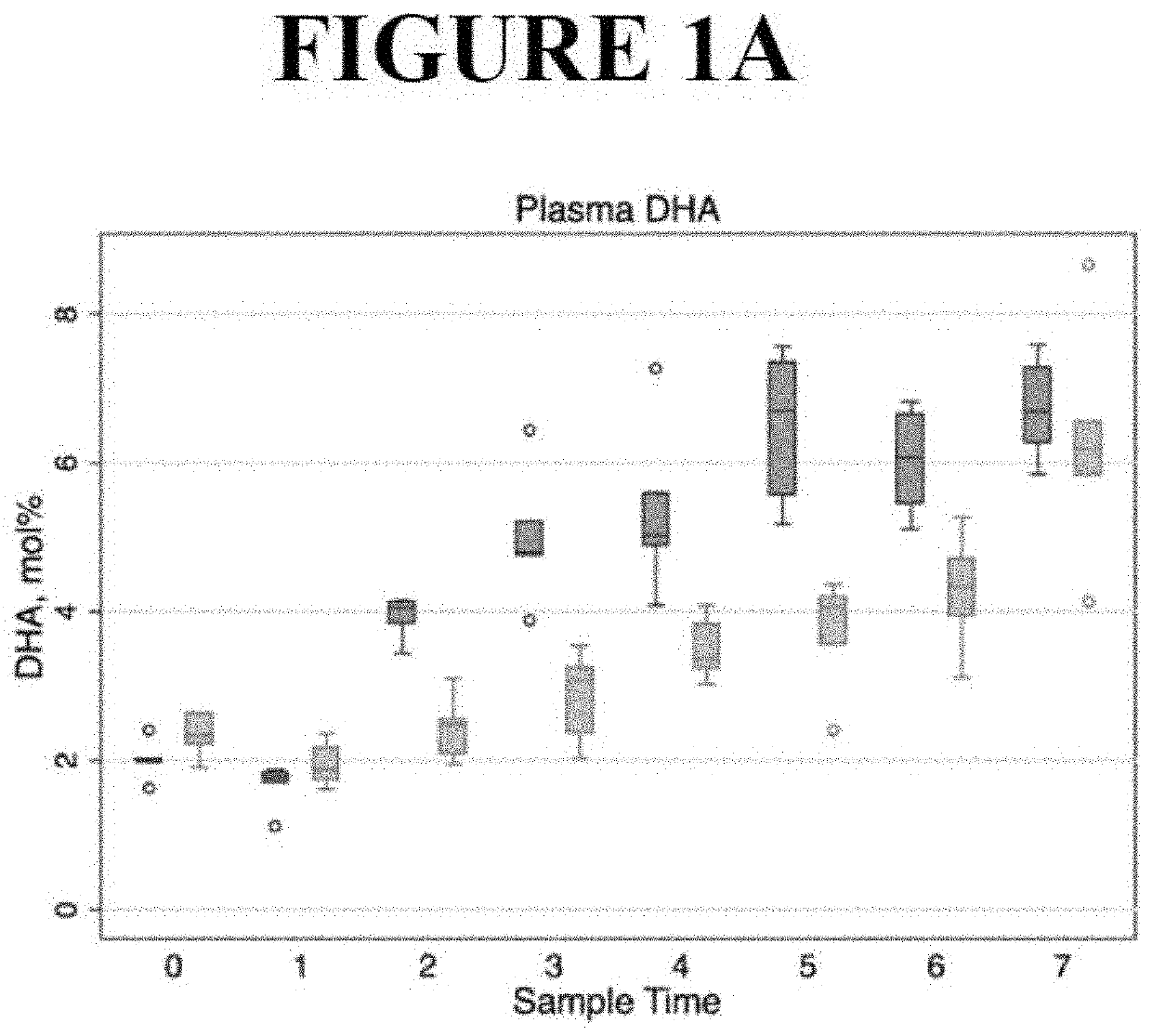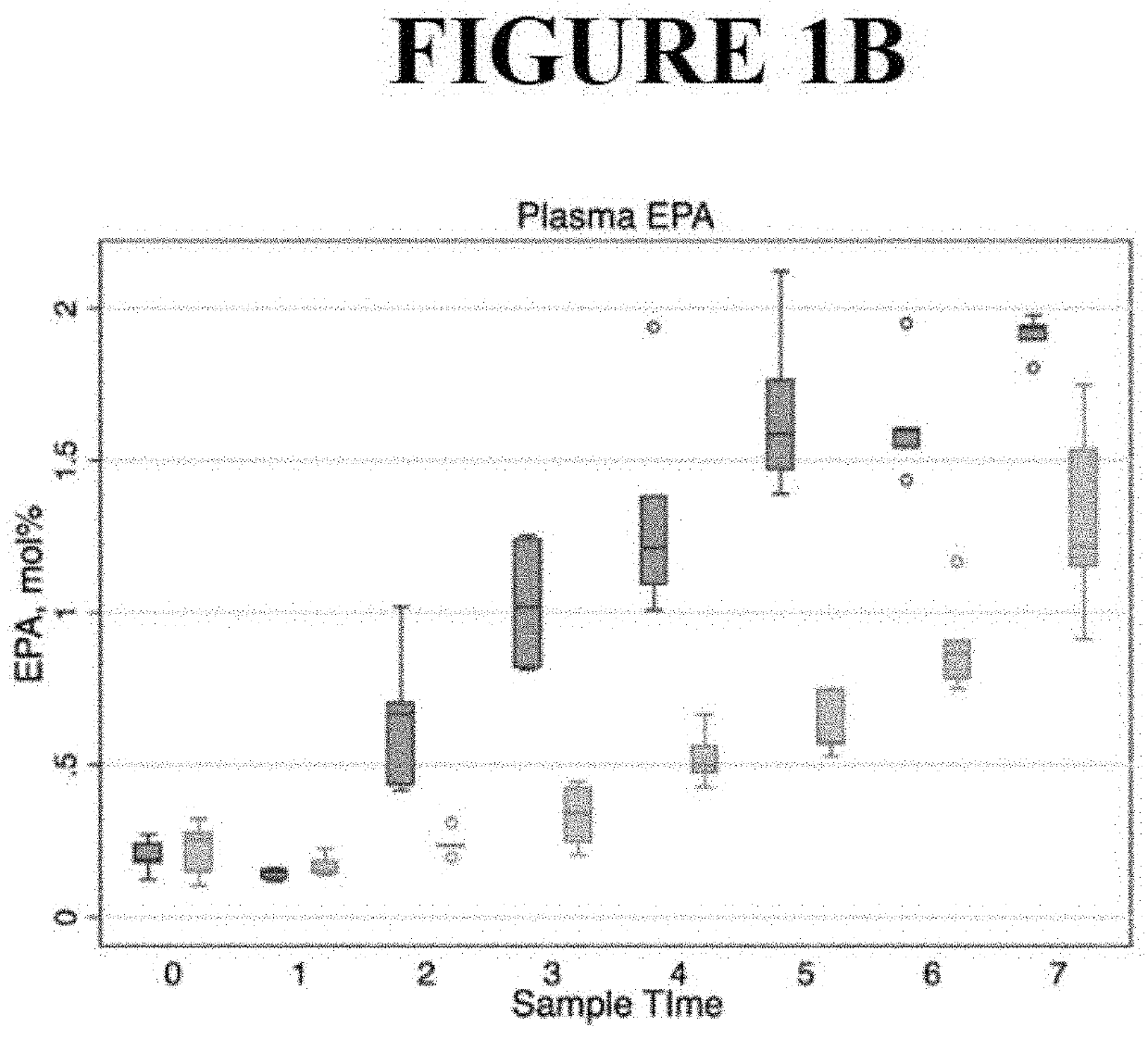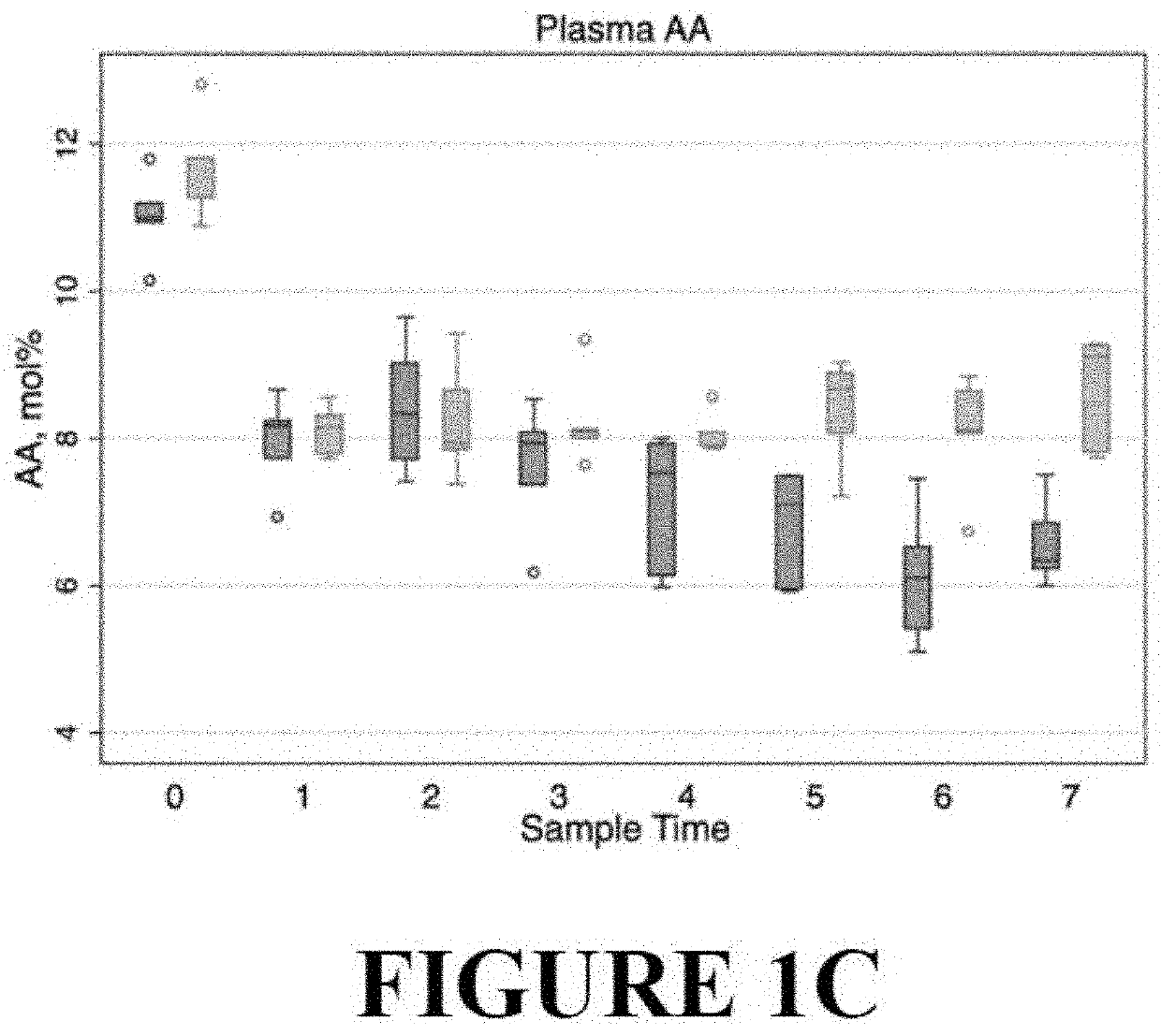Either a congenital
abnormality in the digestive or absorptive processes or, more commonly, a secondarily acquired disorder of such processes may result in
malabsorption.
Neonates,
young infants and adolescent humans with
malabsorption syndromes, in particular fat malabsorption syndromes, are at particularly high risk for
chronic diarrhea and
malnutrition due to insufficient energy intake of high-energy value dietary lipids and essential lipids, which constitute building blocks for normal function of multiple body systems.
If disease, accident, or any other cause results in a loss of 50% of the
small intestine or leaves less than 200 cm of viable length, a patient is at high risk of SBS.
Unfortunately, many patients cannot be weaned from TPN.
Patients on long-term TPN frequently experience serious metabolic complications.
This is largely due to the fact that infants are currently administered an intravenous solution of DHA, leading to
liver injury, Mortality in infants who develop
cholestasis is estimated to be as high as 80%.
These
fat emulsions cannot be eliminated from PN because to do so would lead to the development of
essential fatty acid deficiency and its concomitant complications.
As the bile ducts become inflamed and narrow, bile backs into the liver causing liver cells to become inflamed.
Immunosuppressants, chelators, and steroids are frequently used to help control the
disease process, but have not shown any significant benefit.
Ursodeoxycholic acid has been studied and may improve the
liver function profile, but a high number of adverse events are associated with this treatment and there is debate about its effectiveness.
Currently there are no effective medical therapies for PSC that result in significant long-term improvement in outcome.
Liver transplantation is the only life extending therapy for patients with end-stage disease, with all of its associated risks, costs and complications.
While different forms of
medical treatment have been tried, there are no established, effective therapies that result in significant long-term improvements in outcome other than
liver transplantation.
Most people with this disease feel well and are not aware that they have a liver problem.
Nevertheless, the condition can be severe and can lead to
cirrhosis, in which the liver is permanently damaged and scarred and no longer able to function properly.
Given the increasing
prevalence and incidence of these conditions, the global burden of NAFLD is expected to increase.
Currently, NASH and NAFLD are under diagnosed due to poor disease awareness, the insufficiency of non-invasive
diagnostic tools and the lack of effective approved therapies.
However, bariatric
surgery is not feasible for the large number of patients having this disease.
Although current evidence from available randomized control trials suggests that while thiazolidinediones and
vitamin E are effective in reducing
liver fat, there are serious safety concerns about long-term use of these agents.
Not every person with NASH develops
cirrhosis, but once serious scarring or cirrhosis is present, few treatments can halt the progression.
Despite the rapidly increasing incidence of NASH, there are no therapies currently approved for the treatment of this common
liver disorder.
However, such improvement is only statistically significant when patients are able to reduce more than 7% of their
body weight over a sustained period of 48 weeks, which occurs in less than 50% of NASH patients.
Vitamin E is not recommended for NASH patients with type-2 diabetes due to lack of data, therefore the use of
vitamin E is limited.
While other off-
label pharmacotherapies demonstrate inconsistent benefits or are associated with significant side effects.
Bariatric
surgery is believed to
impact NASH through dramatic
weight loss, but it has significant complications and drawbacks.
These include a host of
perioperative risk factors, the need to adhere to post-surgical diet and nutritional regimens and high costs.
A relatively small number of these procedures are performed annually on NASH patients compared to the overall NASH
population, which we believe is due to the complications and drawbacks of bariatric
surgery relative to NASH patient numbers.
We believe widespread increased adoption of bariatric surgery for NASH is impractical based on cost and the large number of patients who would require it.
In addition, some retrospective and prospective studies have indicated that the procedure may worsen
fibrosis.
The availability of liver donors is extremely limited and the cost of a liver transplant is a significant economic burden, with an estimated cost per procedure of approximately $577,000.
Therefore, a significant unmet need exists for alternative treatments for NAFLD and NASH.
Obesity also contributes to diabetes and high
blood cholesterol, which can further complicate the health of a patient with NASH.
There is no current approved treatment for NASH or NAFLD.
In individuals with two mutated genes, the
resultant abnormal
hemoglobin S polymerizes under
low oxygen tension and causes abnormal red blood cells.
Sickle
cell disease is a serious disease that significantly compromises the quality of patients' lives and reduces
life expectancy significantly.
As a result, patents with sickle
cell disease frequently develop
anemia.
Patients with
anemia experience fatigue,
weakness, shortness of breath, dizziness,
headaches, and coldness in the hands and feet.
Anemia can also cause delayed growth and development in children.
The rapid breakdown of red blood cells may also cause
jaundice.
Crises can be severe enough to require hospitalization and can be fatal.
Deprivation of
oxygen-rich blood is especially deleterious to the lungs, kidneys,
spleen, and brain.
A particularly serious complication of sickle cell disease is
pulmonary hypertension linked to blockages in the blood vessels that supply the lungs.
Other serious consequences of the blocked blood vessels are strokes, ulcers of the lower extremities,
impaired vision and priapism.
Blockage of the blood vessels supplying the
spleen may lead to failure of that organ, which results in serious infectious conditions such as
osteomyelitis,
cholecystitis, pneumonia and urinary tract infection.
Ultimately, sickle cell disease causes multi-
organ dysfunction and early death in affected individuals.
Unfortunately, for decades the
root cause of sickle cell disease was misunderstood.
In fact, recent research has shown that red blood cells do not sickle in sickle cell disease patients until after a
cascade of events occurs which leads to an increased stickiness of the blood cells and vessels.
Thus, without being bound to any particular theory, it is believed that restoring the fatty acid compositions to nearer to normal levels will create a significant decrease in the
inflammation and thus diminish the morbidity of sickle cell disease.
It has been found that besides the damage caused by
sickle cells themselves, the
inflammatory response that occurs in sickle cell disease patients could potentially play a significant role in the occurrence of painful episodes or pain crises.
It also has been found that sickle cell patients have abnormal blood fatty acids.
Age-related
macular degeneration (AMD) is a condition that results in a loss of vision in the center of the visual field (the macula).
It is a progressive disease and is the leading cause of severe vision loss in people over age 60.
It is believed these spots are deposits or debris from deteriorating tissue, which accumulates between the
retina and the
choroid due to the inability of the RPE to get rid of the waste and leads to the eventual deterioration of the photoreceptors.
These blood vessels leak blood and fluid into the
retina, causing
distortion of vision that makes straight lines look wavy, as well as blind spots and loss of
central vision.
It has been reported that the
pathophysiology of AMD is due to cumulative
oxidative damage to RPE cells resulting from an imbalance between the generation of ROS and the ability of these cells to destroy and / or protect against ROS damage.
However, because the AREDS2 formulation did not include formulas with self-micellizing properties, the AREDS2 study was unable to evaluate an efficacious
bioavailability of the omega-3 fatty acids on AMD.
Furthermore, the AREDS2 study was unable to evaluate predictable, non-food dependent
bioavailability of fat-soluble vitamins because said vitamins were not co-administered with self-micellizing formulations.
Therefore, the benefits of administering omega-3 fatty acids with self-micellizing formulations would not have been recognized by previous studies.
The lack of any approved effective medications for AMD warrants the critical need for new therapies to treat AMD.
Current pharmacological options for the disease are limited to symptom management and their long-term use leads to important side effects.
It damages the
myelin sheath, the material that surrounds and protects your
nerve cells.
This damage slows down or blocks messages between your brain and your body, leading to the symptoms of MS.
They can include visual disturbances,
muscle weakness, trouble with coordination and balance, sensations such as numbness, prickling, or “pins and needles”, and thinking and
memory problems.
There is no treatment available, however, for primary progressive MS (PPMS).
When they fail to receive messages, the muscles lose strength,
atrophy and die.
Dementia is the loss of cognitive functioning—thinking, remembering, and reasoning—and behavioral abilities, to such an extent that it interferes with a person's daily life and activities.
However, these drugs don't change the
underlying disease process, are effective for some but not all people, and may help only for a limited time.
Both of these processes are known to damage nerve tissue.
Alzheimer's disease represents a major health problem in the US, estimated to be the third leading
cause of death, yet the causes of Alzheimer's disease remain largely unknown and misunderstood.
However, because the absorption of lipids by the digestive
system requires a co-consumption of the dietary fats necessary to form naturally occurring micelles, the ability to properly
dose patients is often a significant challenge.
Further complicating matters, the over-introduction of certain lipids, such as the fat-soluble vitamins, can be harmful.
Resection or bypass of the
small intestine, such as in short bowel disease, typically leads to malabsorption and
magnesium loss.
 Login to View More
Login to View More  Login to View More
Login to View More 


